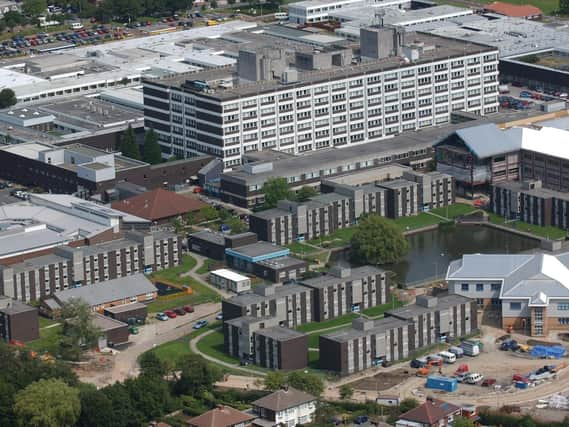Readers' letters: Preston should be proud of its hospital


During that time he was in the care of the neurosurgeons, respiratory consultants and many doctors and nurses.
(His stay was not Covid-19 related).
He was then transferred to the Barton rehabilitation ward, where he spent five months.
Advertisement
Hide AdAdvertisement
Hide AdIn all that time, he received wonderful care from dedicated and professional people.
It would not be fair to name individuals for the fear of leaving someone out.
We will be forever grateful to everyone who afforded our son such loving care and attention.
The NHS is too often used as a political football by point-scoring politicians.
Advertisement
Hide AdAdvertisement
Hide AdI have no allegiance to any political party, but know for sure that if the country was in the hands of medical professionals we would all benefit.
Preston should be very proud of its hospital.
We should all be extremely grateful to everyone who works there. Thank you Royal Preston and the NHS, we are forever in your debt.
Chris Coe
Great Harwood
virus
A lesson from plague history
Regarding the current pandemic, maybe we should follow the brave people of Eyam when the plague struck them in the 17th century.
For those unfamiliar with the true story, in the years 1665-1666, bubonic plague was sweeping the nation; in particular dirty, over-crowded (yes, even in those days!) London.
Advertisement
Hide AdAdvertisement
Hide AdSleepy little Derbyshire villages such as Eyam and Stoney Middleton had escaped fairly unscathed, until a trader in Eyam received a bundle of clothes from the capital. Unfortunately, that bundle of clothes contained ‘a few extras’ in the form of rat fleas and those fleas carried the disease-carrying bubonic plague bacteria (Yersinia pestis).
Soon, the fleas were hopping about the village starting to infect people with the bacteria as they devoured the residents’ blood.
And thus it was that the Boris Johnson of his time, the Rev Mompesson, decreed to his parishioners that they must isolate themselves so the disease would not be passed onto its near neighbours, such as Stoney Middleton.
However, in a manner fitting that of the likes of Dominic Cummings, the good Rev had sent his children away to Sheffield before the isolation came into effect.
Advertisement
Hide AdAdvertisement
Hide AdHe was going to send his wife Catherine away as well, but she refused.
Mompesson also arranged with the nearby village to set up a scheme whereby provisions may be purchased to sustain the Eyam villagers; payment being made by leaving coins in drilled out holes filled with vinegar (to sterilise the coins from the then as yet unknown agents of doom) on a boundary wall.
Other historians suggest the money was left under stones in a boundary stream.
While this arrangement did its job, alas, 260 Eyam residents died, including Catherine.
Advertisement
Hide AdAdvertisement
Hide AdThis does, however, show that isolation from a disease – whether of bacterial or viral cause – does work.
So I’m off with my drill to create holes in my boundary wall and fill them not with vinegar, but inject bleach into the holes as Trump has suggested!
Now, whether this bleaches my plastic pounds remains to be seen, but my shopping list is ready and waiting to go.
Neither my neighbour nor I have the disease ... yet, so no comment about a plague on both your houses, please!
Neil Swindlehurst
via email
roads
Learn more about cycling
Advertisement
Hide AdAdvertisement
Hide AdOne consequence of the first lockdown is that roads became empty and cycling increased by some 300 per cent.
Now, findings from the University of York show that road traffic is getting back to pre-lockdown levels. As a result, cyclists are going to suffer – in part from air pollution and in part because the majority of drivers haven’t a clue what riding a bicycle entails.
The reality is millions of drivers don’t know that wind, rain, and cycling up hills can leave cyclists exhausted, and therefore more vulnerable than when they cycle in sunshine.
And now that roads can be covered with autumn leaves, how many drivers, and indeed novice cyclists, know that the leaves might cover potentially lethal hazards such as potholes?
Advertisement
Hide AdAdvertisement
Hide AdGiven the boredom of lockdown and rising unemployment (with no money for cars etc), while cycling can be hugely beneficial, wouldn’t now be a good time to have as many cycling programmes as we have food programmes?
Allan Ramsay, Radcliffe
Comment Guidelines
National World encourages reader discussion on our stories. User feedback, insights and back-and-forth exchanges add a rich layer of context to reporting. Please review our Community Guidelines before commenting.